Star Trek has consistently been one of the most innovative and inspiring properties in science-fiction for more than 50 years now. There are many excellent movies, TV shows, games, and books out there bearing the Star Trek brand and given the franchise’s longevity, it’s hardly surprising that there is also no shortage of fascinating behind-the-scenes stories revolving around it as well. Whether you’re a devoted Trekkie or a newcomer who has enjoyed the rebooted movie franchise so far, you’re sure to get a kick out of the following Star Trek facts.
In honor of Sir Patrick Stewart’s birthday, here are 25 lesser-known facts about the Star Trek franchise. Enjoy!
25. Nichelle Nichols Originally Quit After The First Season
Nichelle Nichols (Lieutenant Uhura) left her post on the U.S.S. Enterprise after the first season of Star Trek ended. Although Nichols’s role on the show is credited as the first black female character on television that wasn’t a stereotype, the actress wanted to leave to pursue a career as a Broadway singer. Fortunately, she was convinced to stay by none other than Martin Luther King. As Nichols revealed in a 2015 Reddit AMA, King basically told her that she had become a symbol for the black community and that if she left, the show’s producers would just replace her with a blonde, white actress. It looks like everything worked out for the best, as Nichols admits that she still “got to do a lot of singing after the series ended.”
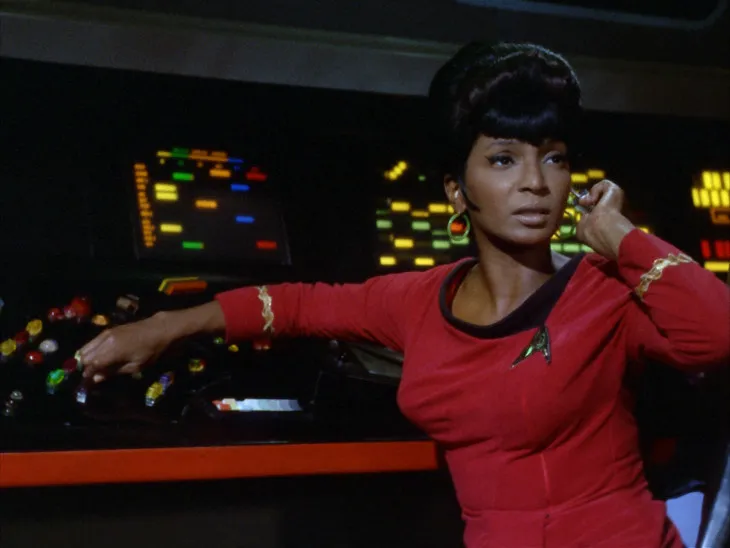 Source: Screenshot via NBC
Source: Screenshot via NBC24. Star Trek Featured The First Interracial Kiss On US Television
Star Trek has always been a franchise known for espousing progressive ideas, with one of its most envelope-pushing moments coming in original series’ season three episode “Plato’s Stepchildren.” The episode, which first aired in 1968, features the first scripted interracial kiss in US television history, as Captain Kirk (William Shatner) and Lt. Uhura (Nichelle Nichols) end up locking lips. A white man kissing a black woman was still very taboo at the time, with the script actually calling for takes with and without the kiss. Shatner and Nichols reportedly flubbed every take that didn’t feature the kiss so that none of them could be used.
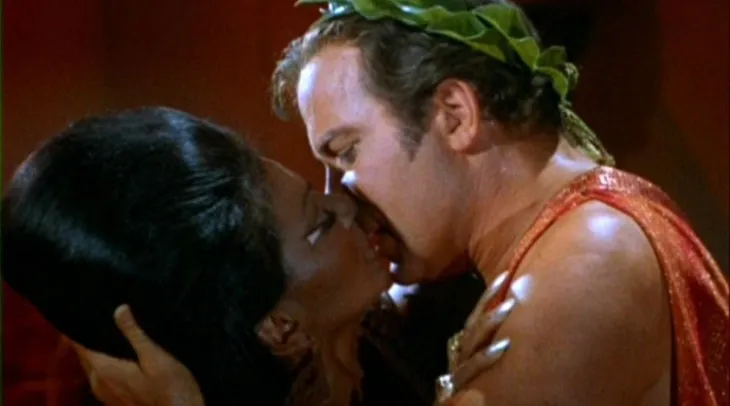 Source: Screenshot via NBC
Source: Screenshot via NBC23. An Episode of ‘Star Trek: The Next Generation’ Was Banned In Ireland
In the Star Trek: The Next Generation episode “The High Ground,” Data mentions that Ireland was unified by terrorism in the year 2024. Seeing as how trouble was still very much brewing in Northern Ireland in 1990, the year the episode first aired, the BBC cut the line. Ireland’s RTE channel went even further, banning the episode altogether.
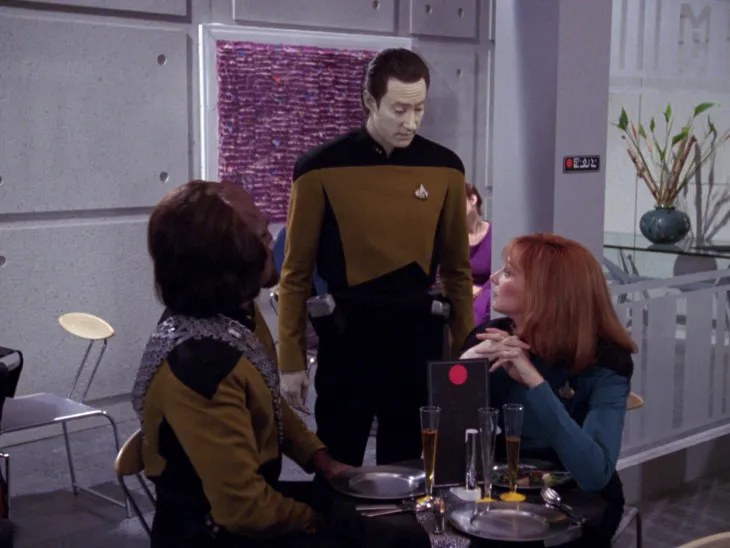 Source: Screenshot via Paramount Domestic Television
Source: Screenshot via Paramount Domestic Television22. Ship Facts
The USS Enterprise owes its registry number NCC-1701 to Matt Jeffries, the art director for Star Trek: The Original Series, who was inspired by his service as a bomber pilot during WWII. “NCC” refers to twentieth-century aircraft registration codes, with the “N” representing an aircraft registered in the United States and the first “C” representing a civil aircraft (Jeffries added the second “C” because he thought it looked “neat”).
In the Star Trek universe, NCC stands for Naval Construct Contract, while USS is United State Ship. Jeffries’ reasoning behind the NCC designation was that in the future, any major space projects would likely be a combined international effort. As for the number 1701, it was chosen for two reasons: the first (01) ship of a 17th federation cruiser design, and the fact that the digits were unlikely to be misread like a 6 or 9.
21. Vulcan Anatomy
The most obvious differences between Vulcans and humans are the pointy ears and superior physical strength, but there are a number of other anatomical variations that separate Spock’s people from homo sapiens. First off, they have different teeth, such as anterior tricuspids. Their eyes also have built-in UV defense in the form of inner eyelids, which offer protection from the intensity of Vulcan’s sun. Speaking of heat, Vulcans can also survive days without water, an adaptation necessitated by their planet’s hot, arid climate. Additionally, the Vulcan heart is located where a human liver would normally be and also beats hundreds of times a minute. Oh and Vulcans don’t have an appendix.
 Source: Screenshot via NBC
Source: Screenshot via NBC20. Wrong Dates
Each episode of the original Star Trek starts with Captain Kirk recording an entry in his captain’s log, but what you may not have realized is that the dates he lists off aren’t based on our current Gregorian calendar. In fact, most of the stardates Kirk mentions were just arbitrary, created as window dressing to emphasize that the series was set in the future. That being said, later Star Trek series has made a point to be more consistent with stardates.
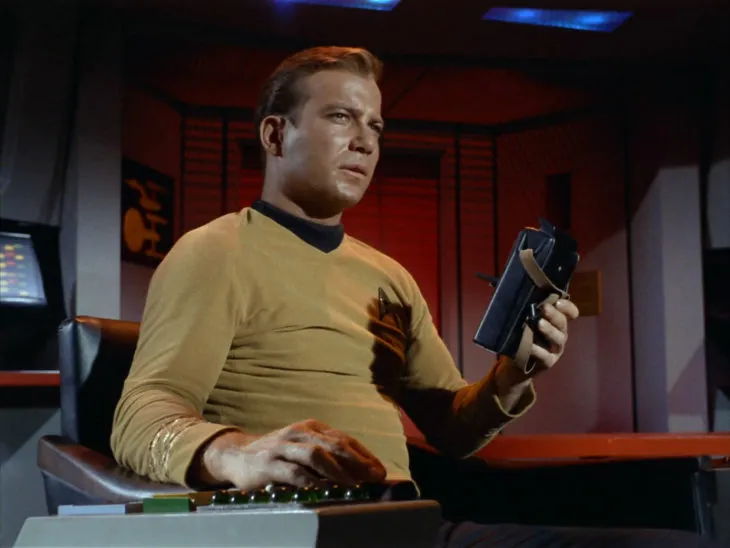 Source: Screenshot via NBC
Source: Screenshot via NBC19. Not So Progressive After All
Star Trek is recognized for being a forward-thinking series, depicting a Utopian vision of humanity in which technology has helped improve all facets of society. Unfortunately, the original series was produced in the 1960s, so it was still subject to the same prejudices as everything else at that time. A good example of this is the fact that Gene Roddenberry initially cast his then-girlfriend (and later wife) Majel Barrett as Captain Pike’s first officer in the Star Trek pilot. However, NBC executives demanded that Barrett’s character be cut, as they felt that viewers would be unable to relate to such a powerful female character.
Judging by the fact that the newest series, Star Trek: Discovery, is led by such a woman in the form of Sonequa Martin-Green’s Star Fleet officer Michael Burnham, it’s clear that TV executives would have a difficult time getting away with such bold-faced sexism nowadays.
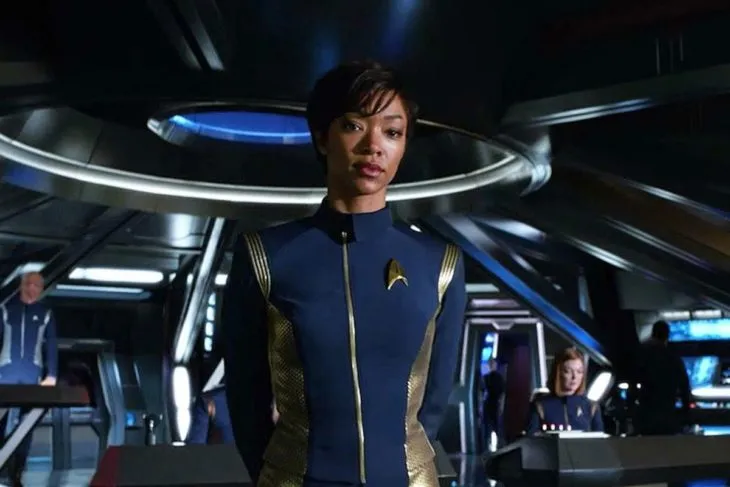 Source: Screenshot via CBS
Source: Screenshot via CBS18. MVP
Another interesting fact about Majel Barrett Roddenberry is that at the time of her death in December 2008, she was the only actor to appear in every Star Trek incarnation up to that point, including the animated series. She even completed work on Star Trek (2009) before her death (she plays the voice of the Enterprise’s computer). Of course, Barrett Roddenberry doesn’t appear in Star Trek: Discovery but considering that series premiered nearly a decade after her death, that can hardly be helped.
17. Spock Can’t Do The Vulcan Salute
It may seem hard to believe, but it turns out that Zachary Quinto, who currently plays Spock in the rebooted film series, can’t do the Vulcan salute. Quinto discovered this during the filming of the first Star Trek (2009), which prompted director J.J. Abrams to glue Quinto’s fingers together so that he could do it correctly (after all, Spock just isn’t Spock without the salute!).
Funnily enough, it turns out that William Shatner couldn’t do it either. Every time he had to do the salute, fishing line was tied to Shatner’s fingers to help him perform the gesture.
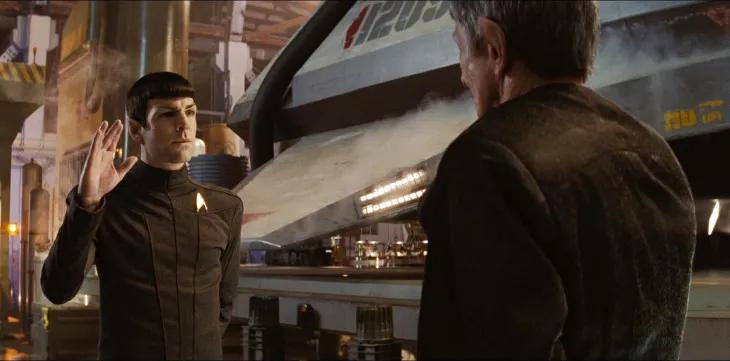 Source: Screenshot via Paramount Pictures
Source: Screenshot via Paramount Pictures16. Teleportation Was Used To Cover Budget Constraints
Teleportation is integral to Star Trek as we know it, but it turns out that Gene Roddenberry and company didn’t include it because it looked cool; it was to hide the fact that the show’s budget couldn’t cover shots of the Enterprise landing on planets! For the record: teleportation is definitely cool, and more efficient than landing a ship anyway.
 Source: Screenshot via NBC
Source: Screenshot via NBC15. Eddie Murphy Was Almost Cast In ‘Star Trek IV: The Voyage Home’
Leonard Nimoy’s 1995 autobiography, I Am Spock, details the interesting story of how Eddie Murphy was almost cast in 1986’s Star Trek IV: The Voyage Home. Murphy was offered $1 million to take the job and a number of possible roles were developed for him. A few of the ones Nimoy mentions include a college professor studying whales, a con artist, and a “psychic investigator” TV host who tries to prove aliens are walking around on Earth. If you can’t imagine Eddie Murphy in any of these roles, that’s okay because neither could he. Murphy passed and made The Golden Child instead, but would later voice regrets over not taking the Star Trek job. – Source
14. Patrick Stewart Thought ‘The Next Generation’ Would Flop
Patrick Stewart, aka Captain Jean-Luc Picard, had every reason to expect that Star Trek: The Next Generation wouldn’t last long. After all, the original TV series was cancelled after only three seasons and many thought that the idea of reinventing the franchise with an entirely new cast was madness. “I really didn’t want this job,” Stewart told The Toronto Star back in 2013. “I was very clear about what to expect. Star Trek: The Next Generation was going to be an utter failure and I would be on my way back to England within a few months. I could make some money for the first time in my life, get a suntan and go home.” Seven seasons and almost as many movies later, it’s safe to say that Sir Patrick probably regrets having had those early reservations.
 Source: Screenshot via Paramount Domestic Television
Source: Screenshot via Paramount Domestic Television13. Star Trek II: The Wrath of Khan’s CGI Connection
1982’s Star Trek II: The Wrath of Khan is widely regarded as the greatest motion picture in the franchise’s history, but one of its lesser known distinctions is that it’s the first movie to feature a sequence that’s entirely computer generated. The sequence in question is the Genesis Device demonstration video, but what’s even more interesting is that the studio that put the scene together would later come to be known as Pixar. Yes, that Pixar.
https://www.youtube.com/watch?v=52XlyMbxxh8
12. There are 721 Lens Flares In Star Trek (2009)
J.J. Abrams is quite infamous for his use of lens flare in his movies and although he’s shown much more restraint as of late, his 2009 Star Trek reboot is just riddled with lens flares — 721 to be exact. If your eyes can handle it, this video compiles every single one of them, because why not?
https://www.youtube.com/watch?v=wYgG9MhV5Q0
11. ‘Star Trek: The Next Generation’ Features Men With Skirts
Although the main male cast members opt out, you can spot some male crew members sporting skirts in the first season of Star Trek: The Next Generation (they’re usually in the background). This is actually part of the show’s lore, as “a logical development, given the total equality of the sexes presumed to exist in the 24th century.” Well, we’ll know for sure in about 300 years or so.
 Source: Screenshot via Paramount Domestic Television
Source: Screenshot via Paramount Domestic Television10. Kirk Never Actually Says “Beam Me Up Scotty”
Although it’s one of the most well-recognized Star Trek quotes of all time, Kirk never actually says the words “Beam me up Scotty” in the entirety of the original Star Trek. However, he does come close several times, which probably explains why the quote has become so popular regardless. In the 1969 episode “The Savage Curtain,” Kirk says, “Scotty, beam us up fast!” and came even closer in the 1967 episode “This Side of Paradise” with “beam me up.” The closest Kirk ever came to saying the phrase was in Star Trek IV: The Journey Home, in which he says, “Scotty, beam me up.”
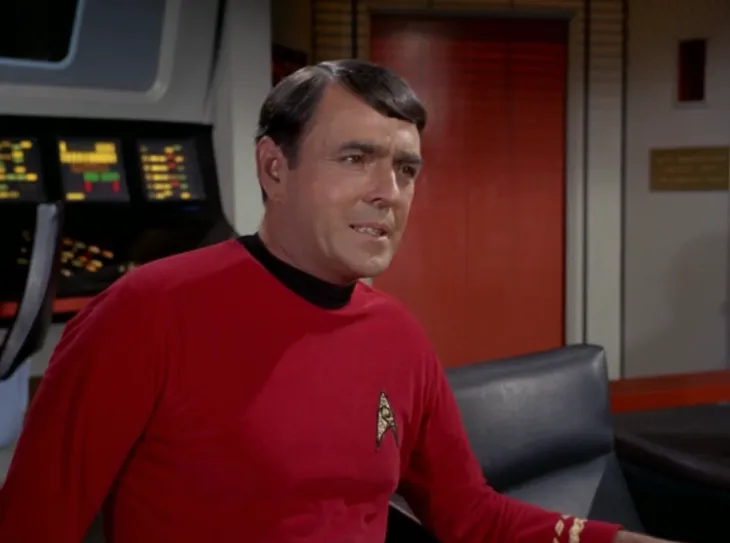 Source: Screenshot via NBC
Source: Screenshot via NBC9. Malcolm McDowell Received Death Threats From Fans For Killing Kirk
Malcolm McDowell is arguably best known for his work in the Kubrick classic A Clockwork Orange, but Trekkies know him better as the man who killed Kirk … and some of them have never been able to forgive him for that, apparently. In the 1994 film Star Trek: Generations, McDowell played the villain Dr. Soran and during a confrontation with Kirk, the good captain ends up falling to his death from a metal catwalk. It’s a pretty lame death for such a legendary character, which seems to be part of the reason why McDowell has received so much venom. According to McDowell, he’s “made his peace with the Trekkies,” having shared “jeers and cheers” with them at various conventions.
8. The Enterprise Has A Bowling Alley
According to Star Trek Blueprints, the U.S.S. Enterprise has a full six-lane bowling alley on board; on Deck 21 to be exact. It even comes fully equipped with a “Refreshments Area” and a “Food and Beverages Preparation Facility.” Do you think Spock has ever bowled a perfect game?
7. Uhura’s First Name Wasn’t Revealed On Screen Until Star Trek (2009)
Before 2009, one may have understandably assumed that Lt. Uhura had no first name, as none had ever been given to her before that point. Finally, in the 2009 reboot, it was revealed that Uhura’s first name is Nyota, although the more dedicated fans out there likely already knew this thanks to DC Comics’ “Who’s Who in Star Trek,” which was released in 1987.
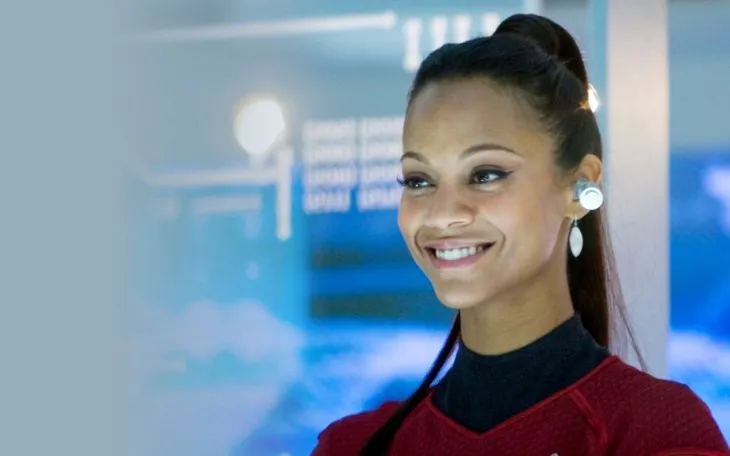 Source: Screenshot via Paramount Pictures
Source: Screenshot via Paramount Pictures6. The Future Requires No Manscaping
One of the more entertaining bits of Star Trek lore is that men no longer have chest hair in the 23rd century. Creator Gene Roddenberry reportedly believed that there would be no chest hair in the future, which meant that William Shatner had to have his chest shaved by a studio barber every time he needed to appear shirtless on set.
Ironically, Vulcans were initially designed to have no chest hair, but Leonard Nimoy refused to shave. “They told me to shave my chest, that Vulcans didn’t have chest hair,” he explained, according to Trek Today. “Well, this Vulcan has chest hair. So they called Roddenberry. Gene was a big man, a former cop. He talked down to you like he was about to give you a citation. But I still refused, so they called my agent. They worked it out, but by then everyone hates me and Gene won’t talk to me.”
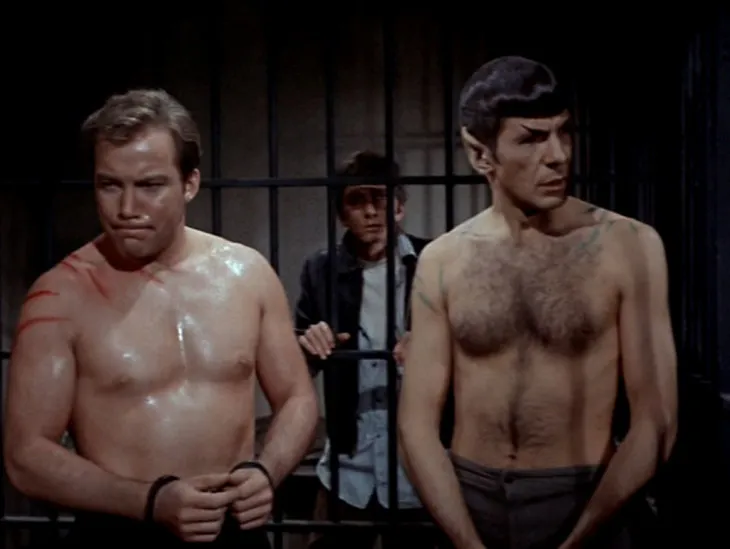 Source: Screenshot via NBC
Source: Screenshot via NBC5. It Would Take You Two Weeks To Watch All Of Star Trek
If you’ve reached this point in your life without having seen much Star Trek, you’ll have quite a Herculean task in front of you if you’re looking to get caught up. If you were to sit down and watch every Star Trek episode, spin-off, and film, it would take you over two weeks to watch everything, without taking breaks. 336 hours of watching Star Trek … well, there are worse ways to spend two weeks!
4. Leonard Nimoy Invented The Vulcan Nerve Pinch
Leonard Nimoy is credited with bringing one of the most beloved characters in sci-fi to life in the original Star Trek series, but it turns out that the actor was also responsible for coming up with many of Spock’s traits himself. One such creation was the iconic Vulcan Pinch move, which Nimoy came up with while filming a scene that called for him to sneak up on an enemy and hit him over the head with a phaser. Recognizing that this didn’t really suit Spock’s style, Nimoy settled on the neck pinch, which would quickly become the character’s signature move.
 Source: Screenshot via NBC
Source: Screenshot via NBC3. The’ I Love Lucy’ Connection
A science fiction TV series such as Star Trek was a risky venture in the 1960s that few production companies would take a chance on, but fortunately for Gene Roddenberry, his show had an unlikely believer in its corner. Lucille Balle, the star of I Love Lucy, had formed a production company called Desilu in 1950 with her estranged husband Desi Arnaz, and Star Trek was one of the pitches that would eventually find its way in front of her. Despite demands from other Desilu executives to pass on the series, Lucy took a chance on Star Trek because she recognized its potential. She made the call for a pilot and in November of 1964, production began. Unfortunately, Desilu was sold off a few years later to Paramount and the show was canceled, but it’s fair to say that Star Trek owes a significant debt to I Love Lucy of all places.
2. Chekov Was Inspired By The Monkees
If you were to put a young Davy Jones and Walter Koenig side-by-side, it may be hard to tell the two apart, which was what Star Trek’s producers were banking on when they cast Koenig as Pavel Chekov in the show’s second season. Jones was a member of the supremely popular band The Monkees at the time and Star Trek producers were hoping to capitalize on the enormous popularity of the band and their TV show by casting the mop-topped Koenig since he looked like a member of the band himself.
1. Shatner Was A Menace
It’s not exactly a startling revelation that William Shatner was a hard man to work with on the Star Trek set, but you may not know the specifics of why he was a bit of a nightmare to work with. Shatner has basically alienated every actor he worked with on the show, especially George Takei (Sulu). Shatner would frequently poach Takei’s lines and demand that Sulu’s screen time be cut down in favor of focusing more on himself and Leonard Nimoy’s Spock. He also managed to work a clause into his contract that ensured that he always had the most lines and that his name would be 10% bigger than anyone else’s in the opening credits. Oh, and Shatner has gone on record admitting that he’s never watched a single episode of the series … or anything he’s ever made, for that matter. A truly inspiring captain, indeed.
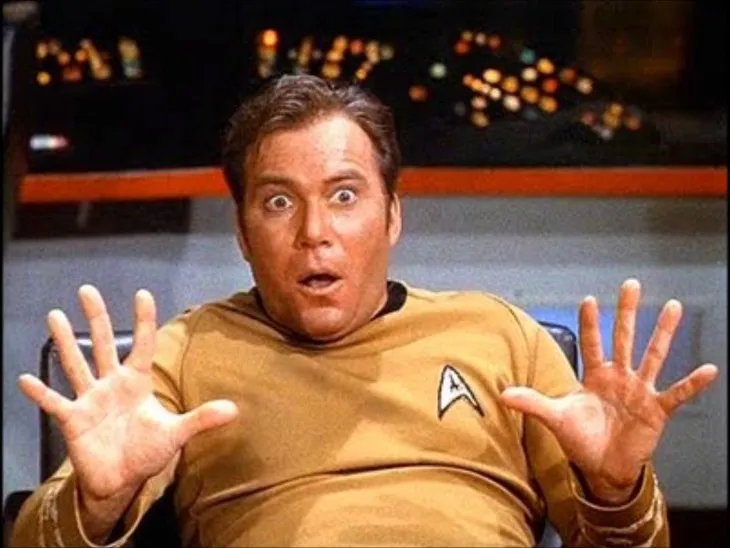 Source: Screenshot via NBC
Source: Screenshot via NBC